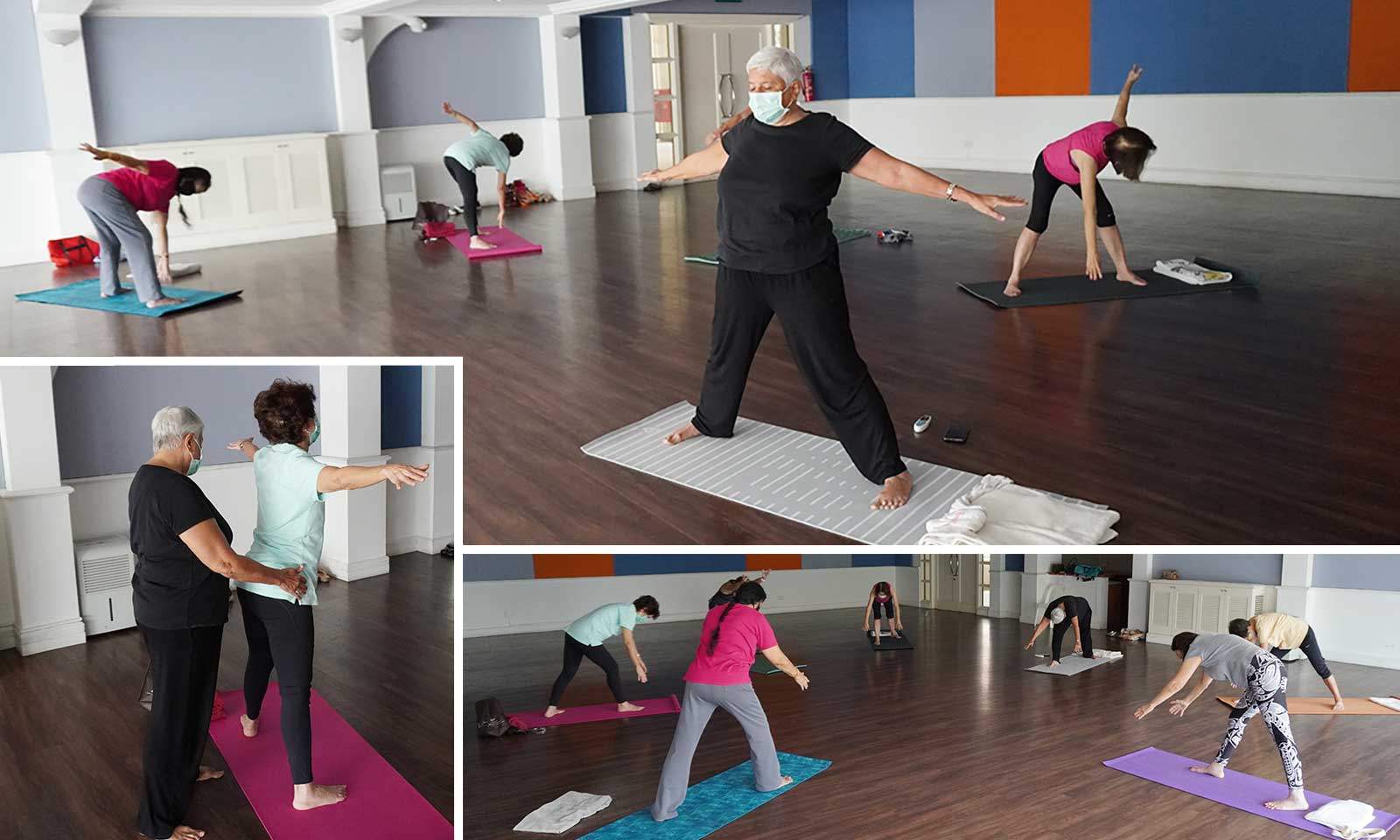
Though retired, Madam Sakina still taught yoga classes in the morning. She also swam daily when the weather permitted. Staying on her own, she desired to live independently for as long as possible.
Several years ago, both of her shoulders started causing her pain. She also had a hard time lifting her arms. “I found it was coming in the way of my yoga teaching … I couldn’t do many of the poses and it was just very frustrating,” she said.
Though the pain was not unbearable – she noted that many people could live with it – she found that it was interfering with her way of life, such as cooking for herself and affecting her sleep.
She reflected that she is now in her early 70s, and if she lives till her 90s, it won't do to prolong the discomfort.
After visiting several doctors, a friend recommended Dr. Ruben Manohara to Madam Sakina, a consultant orthopedic surgeon specializing in trauma management, sports injuries, and degenerative conditions.
Dr. Manohara diagnosed Madam Sakina with severe osteoarthritis of the shoulders. Shoulder arthritis affects 16% to 20% of those older than 65 years of age1, although it can occur as early as your 40s and 50s. In terms of its prevalence, he explained that there is no Singapore registry/data on shoulder-specific arthritis.
“Shoulder arthritis can be degenerative from overuse as well as genetic causes, from rheumatoid arthritis, from previous trauma, following massive rotator cuff tear and could occur following a joint infection,” he added. Besides the age related factor, he said the other risks factors include gender, race, suffering from gout and shoulder instability.
The condition refers to damage, usually wear and tear, of the cartilage, which covers the ends of bones to create a low-friction environment and allows the bones to glide smoothly over each other when the joints move. When the cartilage breaks down, the exposed bones may rub against each other and cause pain.
Symptoms often include shoulder pain, weakness, swelling or tenderness at the joint, and pain that could last for months or years2.
Dr. Manohara recalled that at that point, Madam Sakina had already tried treatments such as steroid injections and non-medical treatment like acupuncture, ayurvedic and physiotherapy, but to no avail. She was also unwilling to take painkillers over the long term and sought to resolve the pain with shoulder replacement surgery. "I was looking to restoring my mobility, and allowed me to continue exercising and teaching, and get on with my daily lifestyle."
"When I first saw her in 2021, she was already living with the condition for four years. A replacement would have predictable, reliable good outcomes, in terms of pain relief, function and longevity of the implant," Dr. Manohara explained.
"Such surgery would allow her to carry on with yoga, swimming, and other daily activities without pain and sleep without discomfort.
In addition, downtime was not an issue – even patients in their 70s to 80s usually recovered relatively quickly and easily after the procedure, compared to other major joint replacements.
For Madam Sakina, her friends' support also helped her decide to go for surgery for her right shoulder.
.2022-08-12-13-55-41.jpg)
Following the smooth recovery of her right shoulder, Madam Sakina opted to also undergo surgery for her left shoulder about six to seven months later. She had her sights set on both shoulders being mobile enough for her to execute the downward facing dog pose and salutations in yoga that she had not been able to do for some years. She also wanted to be able to swim the freestyle stroke, which required both shoulders.
To her, an upbeat attitude was a huge help in recovering from the procedures. "Having gratitude and having a positive outlook is very important in recovery in your rehab," she said. Madam Sakina also highlighted the importance of having a goal to look forward.
During the healing process, Madam Sakina was cautious when carrying heavy items such as groceries, usually using the arm that was not operated on to lift these. She also waited for a few more weeks before getting back to driving.
“I focus and work hard through exercise and regular physiotherapy to help me get back my mobility. For me, my right shoulder healed in 4 to 5 months after the operation while my left is about 90% healed 4 months since my surgery in March. For patients who are not dedicated to the rehab, it might take much longer,” she added.
After getting replacement surgery for both shoulders, carrying out her yoga poses was "much better than before".
Looking back at the process of seeking and receiving treatment for shoulder arthritis, Madam Sakina said that the decision to undergo shoulder replacement surgery depends on the person's aspiration for health and lifestyle.
"Not everyone may have the same urgency, need, or shared my goals."
Receiving the treatment aligned with her personal life goals of sustaining her yoga practice and living independently for as long as possible. Though her left shoulder is still in the process of recovering, she is grateful for her regained mobility. She acknowledges that while a lot of hard work went into her rehabilitation, her mindset is that “it's not going to get worse. It can only get better."
References
1Optimal management of glenohumeral osteoarthritis. Orthopedic research and reviews. 2018;10:9.
2https://www.shoulderclinic.sg/shoulder-arthritis/